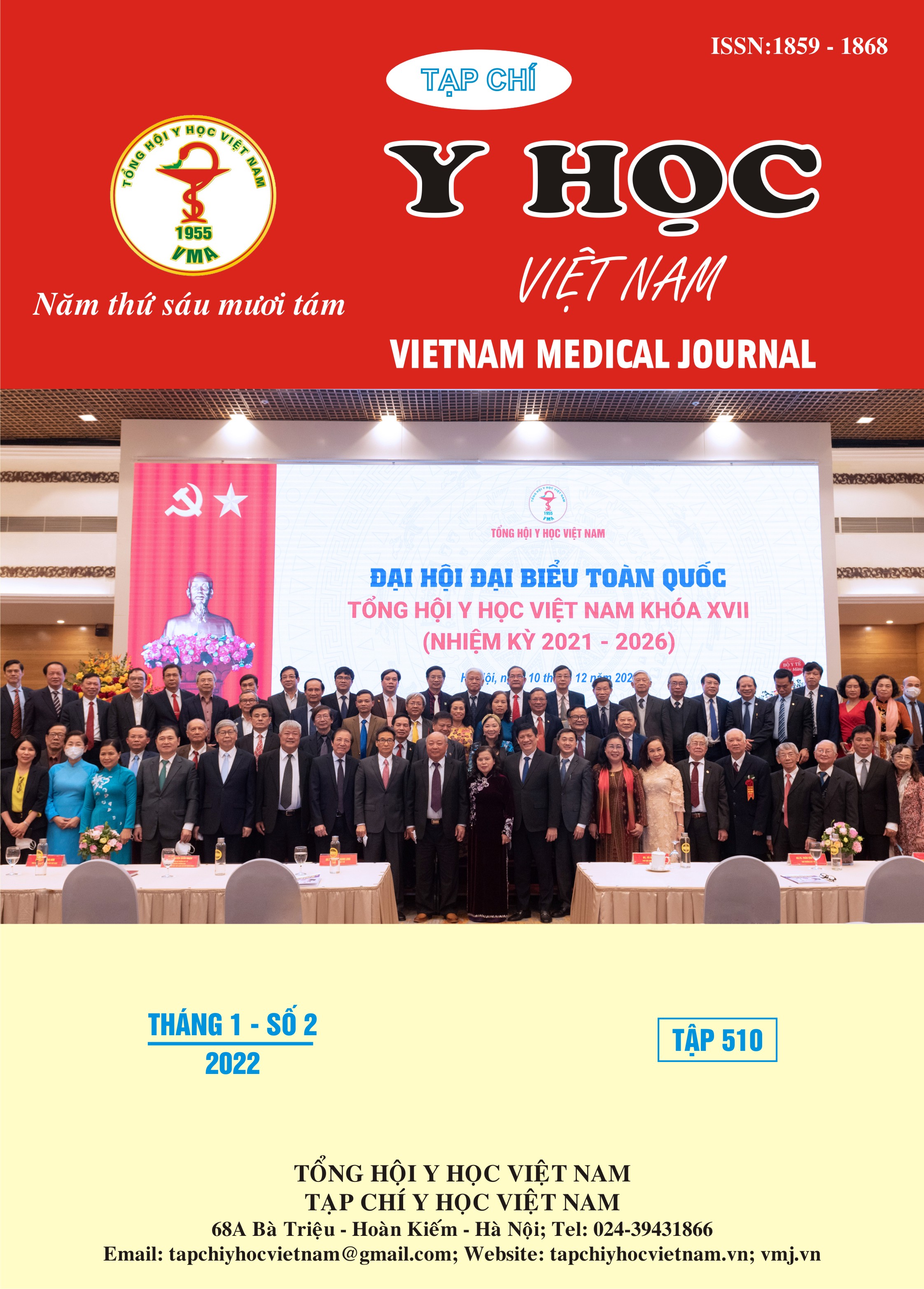STUDY ON THE ROLE OF CHEST MAGNETIC RESONANCE IN DIAGNOSING NON-SMALL CELL LUNG CANCER AT HAI PHONG INTERNATIONAL GENERAL HOSPITAL 2019 - 2020
Main Article Content
Abstract
Objectives: This study aims to: 1-Describe clinical features and computed tomography images, chest magnetic resonance in the diagnosis of non-small cell lung cancer at Hai Phong International General Hospital, 2019 up to 2020. Subjects and methods: The study subjects included 43 patients diagnosed at Hai Phong International General Hospital during the period from January 2019 to December 2020, in accordance with the study criteria. The research method was descriptive cross-sectional, prospective, non-probability sampling. Research facilities included Avanto Siemens CT scanner (Germany) 1.5 Tesla, with an agreed procedure and carefully trained. The data collected in the study were processed according to the SPSS 22.0 medical statistical algorithm. Results and Conclusions: The study included 43 patients with non-small cell lung cancer, the ratio of men was higher than that of women (2.1/1), the mean age was 64.4 ± 12.6. On magnetic resonance imaging, the mean size of primary tumor in 43 cases with chest MRI was 39.7 ± 18.7 mm, there was no statistically significant difference (p = 0.06 > 0, 05) compared with CT scan. In the atelectasis group, CT detected tumors in 7/8 cases, while MRI detected 8/8 cases (100%). CT scan detected more than 2 cases of pleural invasion and 1 of liver metastases compared with CT. However, the difference was not statistically significant, but there was a high similarity in TNM assessment between MRI and CT. Thus, chest MRI can be considered as an alternative indication in subjects who do not have an indication for CT scan and especially in cases of suspected lung tumor in the collapsed lung area, lung tumor close to the heart, mediastinum.
Article Details
Keywords
Lung tumor, non-small cell, lung magnetic resonance imaging
References
2. Cung Văn Đông (2017). Nghiên cứu giá trị của chụp cộng hưởng từ trong chẩn đoán ung thư phổi. Luận văn Thạc sỹ Y học, Đại học Y Hà Nội, Hà Nội.
3. Nguyễn Văn Hiếu (2015). Ung thư phế quản phổi. Bài giảng ung thư học. Nhà xuất bản Y học, Tr. 147-164.
4. Bray F., Ferlay J., Soerjomataram I. et al. (2018). Global cancer statistics 2018: GLOBOCAN estimates of incidence and mortality worldwide for 36 cancers in 185 countries. CA Cancer J Clin, 68(6), 394–424.
5. Chen W., Jian W., Li H. et al. (2010). Whole-body diffusion-weighted imaging vs. FDG-PET for the detection of non-small-cell lung cancer. How do they measure up?. Magn Reson Imaging, 28(5), 613–620.
6. Hochhegger B., Marchiori E., Sedlaczek O. et al. (2011). MRI in lung cancer: a pictorial essay. Br J Radiol, 84(1003), 661–668.
7. Howlader N, Noone AM, Krapcho M, et al. (2017). SEER Cancer Statistics Review, 1975-2014. .
8. Pham T., Bui L., Kim G. et al. (2019). Cancers in Vietnam—Burden and Control Efforts: A Narrative Scoping Review. Cancer Control J Moffitt Cancer Cent, 26(1).
9. Tang W., Wu N., OuYang H. et al. (2015). The presurgical T staging of non-small cell lung cancer: efficacy comparison of 64-MDCT and 3.0 T MRI. Cancer Imaging, 15(1).


